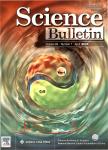Global warming weakening the inherent stability of glaciers and permafrost
Global warming weakening the inherent stability of glaciers and permafrost作者机构:State Key Laboratory of Cryospheric Science Northwest China Ecological Environment and Resource Research Institute Chinese Academy of Sciences Key Laboratory of Ecohydrology of Inland River Basin Chinese Academy of Sciences University of Chinese Academy Sciences Shaanxi Key Laboratory of Earth Surface System and Environmental Carrying Capacity Northwest University College of Urban and Environmental Sciences Northwest University State Cryosphere Monitor and Research Station Northwest China Ecological Environment and Resource Research Institute Chinese Academy of Sciences State Glacier Monitor and Research Station Northwest China Ecological Environment and Resource Research Institute Chinese Academy of Sciences
出 版 物:《Science Bulletin》 (科学通报(英文版))
年 卷 期:2019年第64卷第4期
页 面:245-253页
核心收录:
学科分类:07[理学]
基 金:supported by the National Natural Science Foundation of China (41730751 41671056)
主 题:Warming Englacial temperature Permafrost Internal thermal state Stability
摘 要:The Cryosphere has been undergoing a worldwide retreat, as seen in the decrease in the areal extent and volume of glaciers and in the areal extent of permafrost. This paper presents a systematic examination of the inherent stability changes of glaciers and permafrost caused by warming. Various study results suggest that over the past 30 years, the internal temperature of glaciers and permafrost exhibits an overall accelerating warming trend. The warming rate peaked in the mid-2000s and slowed slightly for several years afterward. In recent years, however, the warming rate has seemed to pick up again. The warming of glaciers and permafrost has exerted great impact on their stability, displayed as intensified melting,increased glacier surging, enlargement of supraglacial lakes, and increased permafrost degradation.Even without a future temperature increase, some glaciers will continue to shrink, and the number of surging glaciers will increase. The transition from low-temperature to high-temperature permafrost is a noticeable warning sign of a comprehensive degradation of permafrost. These results indicate that‘‘warming glaciers and permafrost will exert significant impacts on the hydrology, ecology, and stability of engineering in cold regions.



